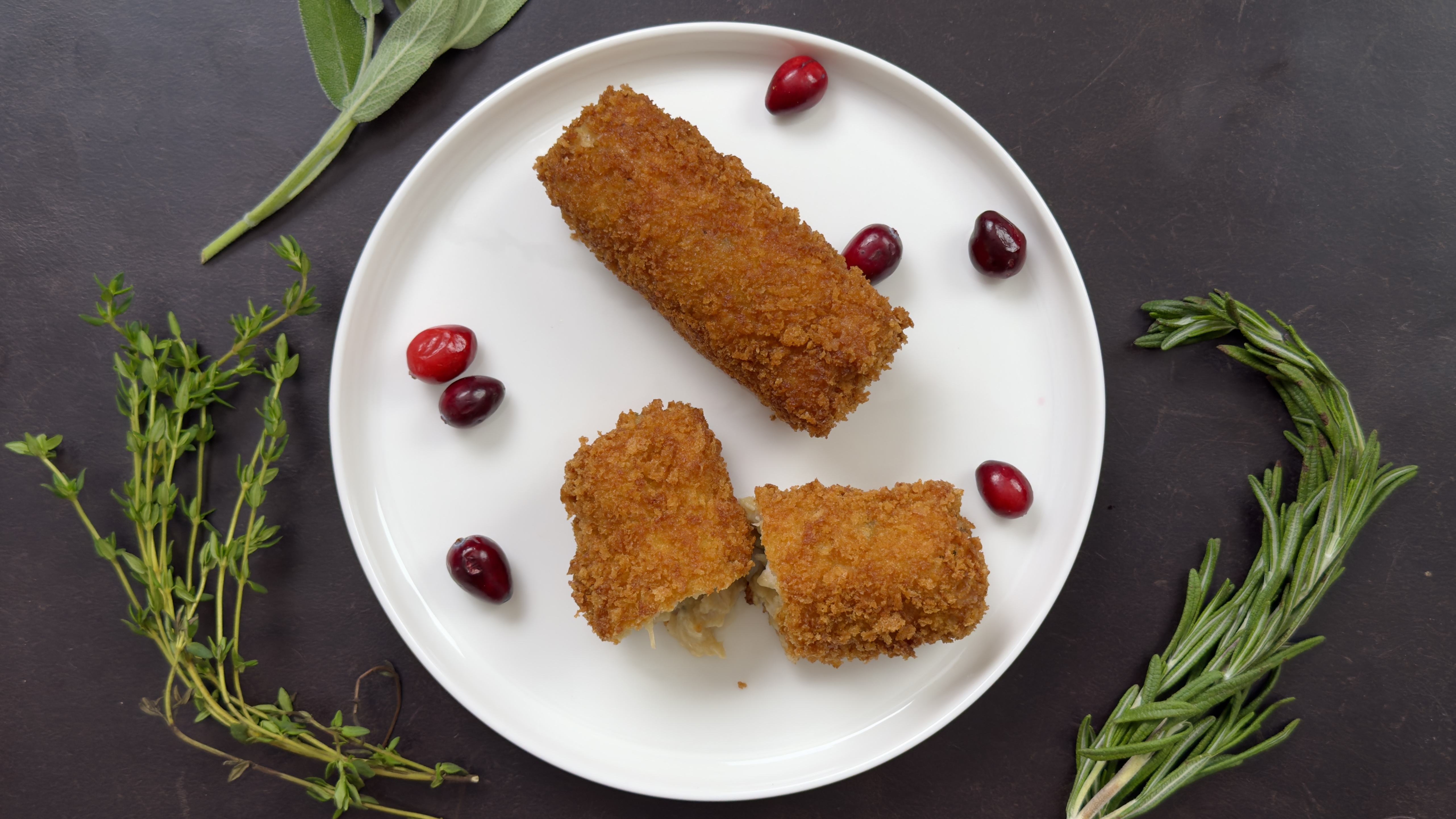Ingredients
Equipment
Method
Make the roux and gravy
- We're going to infuse the butter with the herbs. Finely chop the garlic, sage, rosemary, and thyme. Place the butter in a saucepan over very low heat. Add the chopped herbs and garlic and keep it warm for 1 hour. This slow infusion allows the butter to take on a rich herb flavor that carries through the entire filling.
- Pour the butter through a fine strainer to remove all herb bits. This prevents gritty texture in the roux. After straining, place the butter back into the saucepan and warm it again over low heat before adding the flour. Using low heat allows the flour to incorporate evenly without forming lumps.
- Add the flour a little at a time, stirring constantly with a wooden spoon. This step prevents lumping and helps the butter absorb the flour fully.
- Raise the heat to medium and continue stirring for 10 minutes. The roux should turn a light golden color. This helps the final filling set firmly instead of becoming runny.
- Add the turkey stock in four additions of about 250 milliliters each, stirring well between additions. Bring to a gentle simmer. The sauce is ready when it coats the back of a spoon and a finger swiped through leaves a clear line. If too thick, add a splash of stock or water.
- Stir in mustard and vinegar. Taste, then add salt and pepper as needed. Turn off the heat.
Make the filling
- Mix the gelatin with room temperature water and let it sit for 10 minutes so it dissolves properly later.
- Stir the sauce often until it cools to between 48 and 60ºC (120 and 140ºF). Add the gelatin and stir until fully melted. If needed, return the pan to very low heat while stirring.
- Chop the leftover turkey finely and stir into the sauce. Add the tablespoon of sage and thyme for a fresh herb boost.
- Spread the filling into a shallow dish. Press cling film directly on top and refrigerate at least 4 hours or overnight.
Shape and coat
- Whisk eggs with milk in one shallow dish. Place breadcrumbs in another.
- Scoop filling and shape into logs about 10 centimeters (3 inches) long and 3 centimeters (1¼ inches) thick.
- Roll each log in breadcrumbs, then dip into egg wash, allow excess to drip off, and roll in breadcrumbs again.
- Refrigerate for 2 hours or freeze for later frying.
Fry
- Put your Dutch oven on the stove, and fill it with oil, making sure to not fill it more than halfway. As you add the kroketten, the oil level will rise, and you don't want it to boil over. Heat your oil to 175C (350F). I use a Thermoworks Chef Alarm for frying. It has a clip that attaches to the pan, so the probe stays in the oil. This way I can monitor the temperature constantly. If you’re using a deep fryer, use the manufacturer’s recommended amount of oil.
- Lower 1 or 2 kroketten at a time into the oil and fry about 5 minutes until deep golden brown. Place on a wire rack to drain. Cool slightly before serving.
Nutrition
Notes
Serving Ideas
Traditionally enjoyed with mustard, but kroketten are also delicious with:
- Cranberry sauce (especially great with turkey or holiday leftovers!)
- Ravigote sauce or remoulade
- On a white casino broodje or soft hamburger bun as a sandwich
- Alongside friets met mayo or a crisp green salad
- For a festive Dutch-inspired dinner, serve kroketten with erwtensoep, zuurkool, or roasted vegetables
- Cup-for-cup gluten-free flour, or
- A mix of rice flour + cornstarch for a lighter ragout
